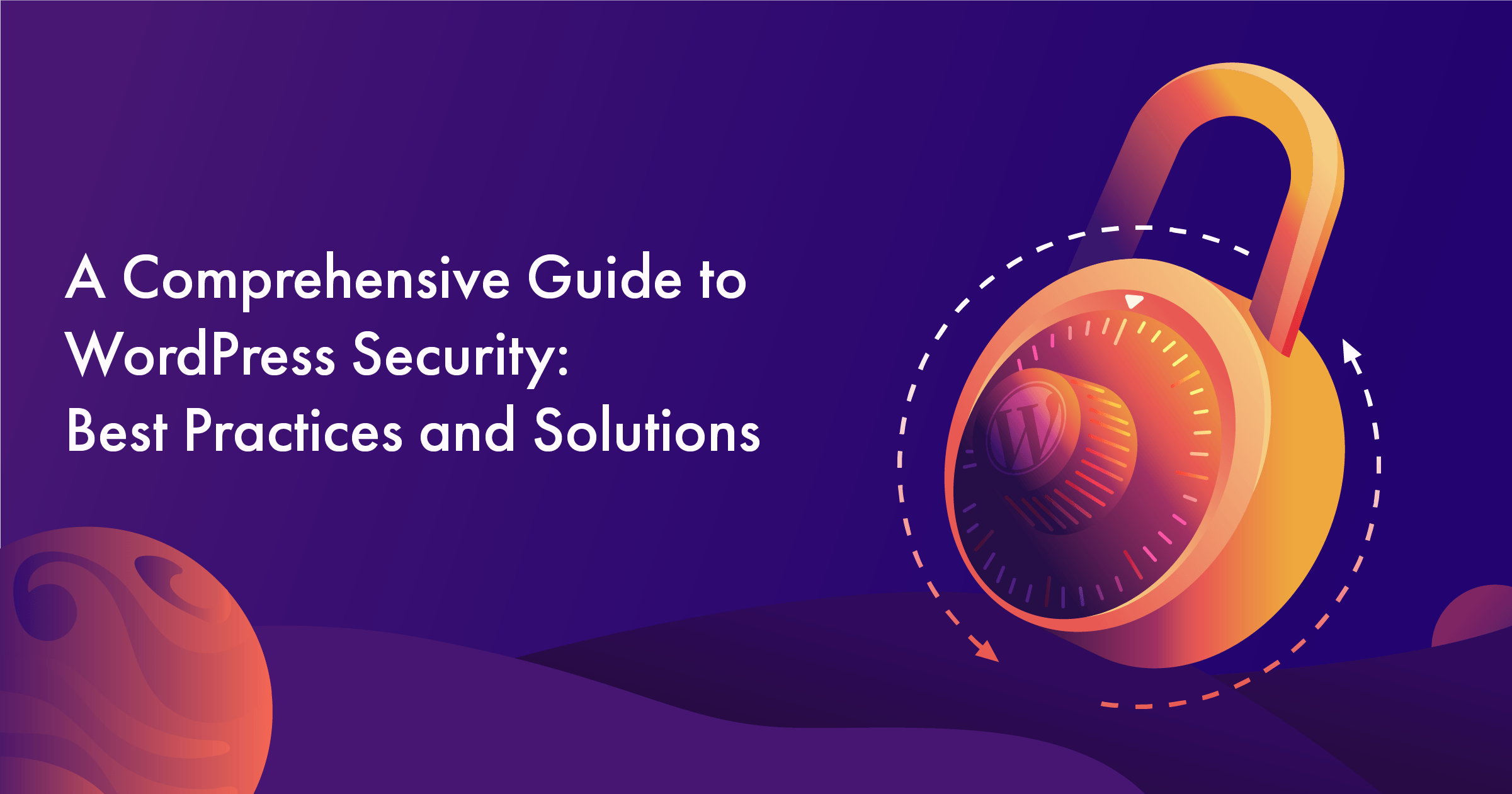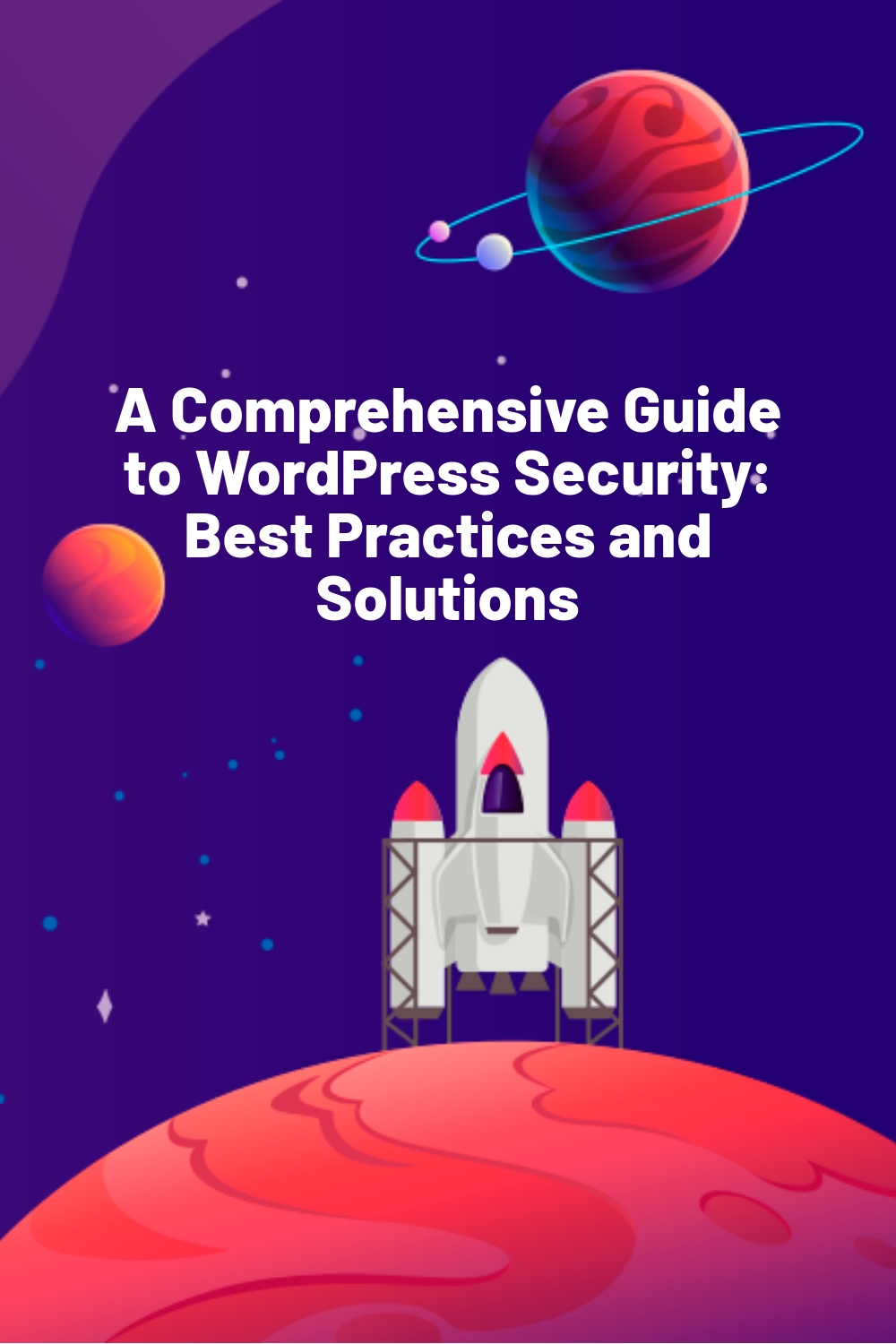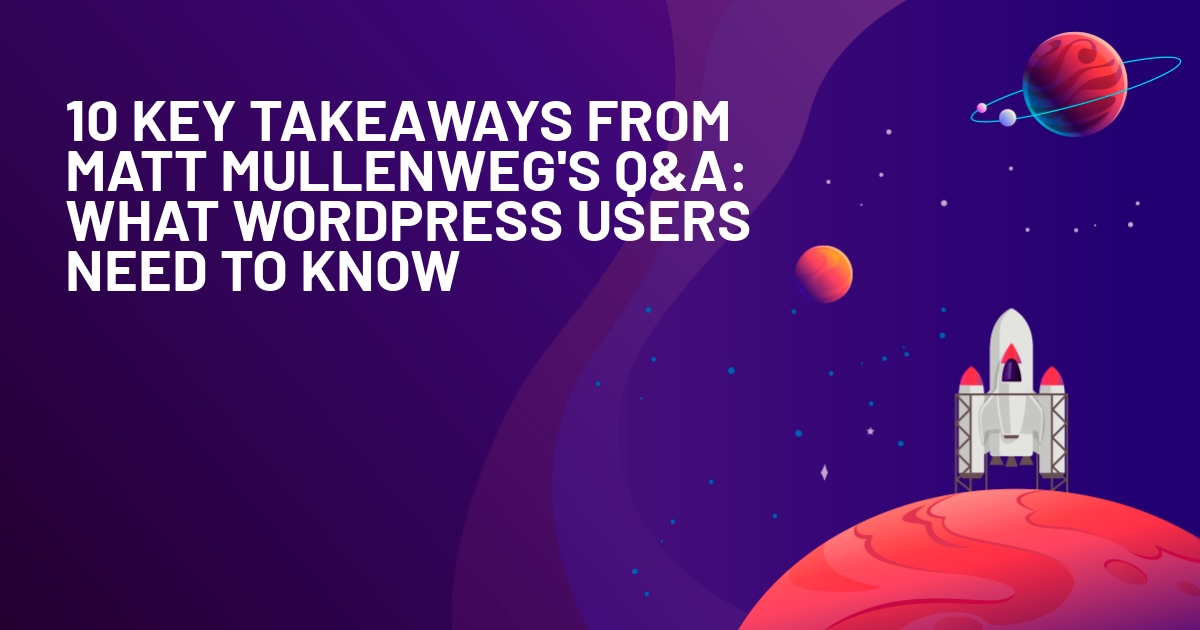WPLift is supported by its audience. When you purchase through links on our site, we may earn an affiliate commission.
A Comprehensive Guide to WordPress Security: Best Practices and Solutions

WordPress stands as a titan powering millions of websites, from small personal blogs to large-scale eCommerce platforms. Its popularity, however, makes it a prime target for cyber threats, necessitating a vigilant approach to security. As WordPress continues to grow in popularity, the stakes for maintaining tight security have never been higher. This guide is designed to be your comprehensive roadmap to understanding, implementing, and maintaining WordPress security.
Understanding WordPress Security
WordPress, due to its widespread use and open-source nature, is often targeted by cybercriminals using a variety of tactics. From brute force attacks aiming to crack your login credentials to sophisticated SQL injections designed to access your database, the threats are as diverse as they are dangerous. In this section, we’ll explore common security vulnerabilities and the importance of a proactive security posture to mitigate these risks.
Common security threats to WordPress sites include:
- Brute force attacks: This method involves attackers using trial-and-error to guess login info, encryption keys, or find a hidden web page.
- SQL injections: Attackers can gain access to or manipulate your database by injecting malicious SQL code into your website.
- Cross-Site Scripting (XSS): Here, attackers inject malicious scripts into the content of a website, redirecting users to malicious sites or compromising their information.
- File upload vulnerabilities: Improperly secured file upload forms can be exploited to upload harmful files, potentially gaining unauthorized access to your site.
- Phishing attempts: Crafting emails or communications that mimic legitimate requests to steal login credentials or personal information.
The Importance of Keeping WordPress Secure
One of the pivotal steps in securing a WordPress site is ensuring everything is up to date. This cannot be overstated, as many attacks target vulnerabilities that have been previously identified and fixed in software updates.
Here’s why updates are crucial:
- WordPress Core: Regular updates to WordPress itself include security patches for vulnerabilities that could be exploited by attackers, such as those potentially found in outdated code like the TimThumb script. Rectifying vulnerabilities like the TimThumb hack is essential for maintaining site security.
- Themes and plugins: Just as with the core, themes, and plugins often receive updates that patch security vulnerabilities. It’s not uncommon for attackers to target sites using outdated themes or plugins as entry points for attacks.
- PHP version: PHP is the scripting language WordPress is built on. Ensuring your website runs on a supported PHP version is crucial for security and performance.
WordPress Security Best Practices
A fortified WordPress site begins with adherence to a set of core security best practices. These foundational steps are your first line of defense, designed to shield your site from the vast majority of common threats. Let’s delve into these practices, focusing on strong passwords and user role management, updates and maintenance, and the implementation of advanced security features.
Strong Passwords and User Role Management
The cornerstone of any secure system is the strength and complexity of its passwords. WordPress sites are no exception. Strong, unique passwords for the WordPress admin area, database, and FTP accounts are non-negotiable. Coupled with this, WordPress’s user role management system offers a nuanced approach to site administration. By assigning appropriate roles and capabilities to users, site owners can minimize the risk of unauthorized changes or access to sensitive areas of the site. This approach is particularly relevant in scenarios like lead generation, where protecting client data is paramount. Managing user roles efficiently ensures that only the right individuals have access to specific functionalities, further bolstering site security.
Updates and Maintenance
Keeping WordPress, along with its themes and plugins, updated is critical. Each update not only enhances functionality but also addresses security vulnerabilities. The act of updating is a preventive measure against attacks that exploit known weaknesses in software. Regular maintenance, including the auditing of themes and plugins for authenticity and security, complements this strategy. It’s also worth noting the importance of backing up your site regularly.
Advanced Security Features
Beyond the basics, incorporating advanced security features can significantly enhance your WordPress site’s defense mechanisms. Implementing an SSL certificate encrypts data transferred between your site and its users, safeguarding personal information during transactions. This is crucial for sites that handle sensitive data, such as eCommerce platforms with buy-now buttons integrated with secure payment gateways. Furthermore, WordPress site owners can leverage security plugins and tools that offer features like firewalls, malware scanning, and more.
Advanced WordPress Security Measures
Beyond the foundational practices, diving deeper into advanced security measures can provide WordPress sites with an extra layer of protection. These techniques address specific vulnerabilities and fortify the website against sophisticated attacks. Let’s explore the nuances of implementing SSL certificates, the importance of secure payment gateways in eCommerce security, and the hardening of WordPress security through specific adjustments and strategies.

Article Continues Below
Implementing SSL Certificates
Securing the connection between a user’s browser and your WordPress site is critical, especially with the increasing concerns over data privacy and security. An SSL certificate encrypts this connection, ensuring that any data transferred, be it personal information or payment details, remains private and secure. This not only protects your users’ data but also enhances your site’s credibility and search engine ranking. For WordPress site owners, obtaining free SSL certificates has become a straightforward process, often facilitated by hosting providers.
Secure Payment Gateways and eCommerce Security
For WordPress sites engaged in eCommerce, securing online transactions is paramount. Integrating secure payment gateways with buy-now buttons ensures that customer payment information is handled securely, minimizing the risk of data breaches. This involves utilizing payment solutions that comply with the Payment Card Industry Data Security Standard (PCI DSS). Additionally, digitized invoices and transaction records must be protected, ensuring that sensitive financial information is encrypted and stored securely.
Hardening WordPress Security
Hardening WordPress involves taking specific steps to enhance the security of your site beyond the basics. This can include measures such as:
- Disabling file editing: Disabling this feature can help prevent unauthorized modifications to your site’s code.
- Protecting the wp-config.php file: Moving it outside the public_html directory or setting strict file permissions can significantly improve its security.
- Changing the database prefix: Changing this prefix to something unique can help protect your database from SQL injection attacks.
Dealing with WordPress Security Breaches
Even with rigorous security measures in place, there’s always a risk that your WordPress site could be compromised. Recognizing a security breach early and responding appropriately can mitigate potential damage, safeguarding your site’s integrity and the trust of your users. This section outlines the essential steps to take if you suspect your WordPress site has been compromised and highlights how plugins and AI tools can be instrumental in scanning for and fixing security vulnerabilities.
Recognizing and Responding to Security Breaches
Signs of a compromise might include unexpected changes to your site’s content, new administrative accounts you didn’t create, a sudden drop in website performance, or notifications from your hosting provider or security tools. Once a breach is detected, take the following steps:
- Stay calm and assess the situation: Panicking can lead to rushed decisions that may exacerbate the situation. Take a moment to assess the extent of the breach calmly.
- Put your site in maintenance mode: This prevents visitors from accessing potentially malicious content and signals to users and search engines that you are aware of the issue and are working to resolve it.
- Change all passwords: Immediately change all passwords associated with your site, including WordPress admin accounts, FTP/sFTP, and your database. Use strong, unique passwords for each account to minimize future risks.
- Contact your hosting provider: Many hosting providers offer assistance in dealing with compromised websites. They can provide valuable insights into the nature of the breach and suggest immediate steps to contain it.
- Restore from a backup: If you have recent backups of your site, consider restoring to a version prior to the breach. This can quickly remove malicious content and plugins from your site but may not address the vulnerability that led to the breach.
Utilizing Plugins and AI Tools for Recovery
After taking immediate action to secure your site, the next step is to identify and fix the vulnerabilities that led to the breach. This is where plugins and AI-powered security tools become invaluable.
- Security plugins: There are numerous security plugins available for WordPress that can scan your site for known vulnerabilities, malicious code, and unauthorized changes. These plugins can also harden your site against future attacks by implementing firewall rules, limiting login attempts, and monitoring for suspicious activity.
- AI tools: AI and machine learning tools can analyze patterns of behavior to identify potential security breaches, even if the specific tactics have not been seen before. AI tools can also assist in automatically hardening your site by adapting security measures based on evolving threat landscapes.
WordPress Security for Specific Use Cases
WordPress’s flexibility allows it to cater to a wide range of websites, from personal blogs to complex eCommerce platforms. However, this versatility means that security measures must be tailored to specific use cases, particularly when handling sensitive data. This section explores two critical scenarios: protecting sensitive data in lead generation and securing eCommerce operations.
Protecting Sensitive Data in Lead Generation
The protection of sensitive data is paramount in the context of lead generation. Let’s use lead generation in the real estate industry as an example: Real estate websites collect a wealth of personal information from potential buyers and sellers, from contact details to financial information. Ensuring the security of this data is not just a matter of maintaining user trust; it’s also a legal requirement in many jurisdictions under laws like the General Data Protection Regulation (GDPR) in the European Union.
- Secure forms: The first line of defense is the implementation of secure forms for data collection. This involves using SSL encryption to protect the data in transit and ensuring that any third-party plugins or tools used for form creation are reputable and maintain high-security standards.
- GDPR compliance: For websites operating within or targeting residents of the EU, GDPR compliance is crucial. This means obtaining clear consent to collect personal data, providing users with access to their data upon request, and the ability to delete it. It also involves securing the data both in transit and at rest, ensuring that it’s protected against unauthorized access.
eCommerce Security Practices
eCommerce sites, including those powered by WooCommerce or similar plugins for WordPress, handle sensitive transactional data daily. This includes credit card numbers, addresses, and personal identifiers. The security measures for eCommerce sites need to not only protect this data but also ensure a secure and trustworthy shopping experience for customers.
- Secure checkout processes: This involves using secure payment gateways that comply with the latest security standards, including PCI DSS compliance, to ensure that payment information is encrypted and handled safely.
- Protecting customer data: Beyond the transaction itself, eCommerce sites must protect customer accounts and stored data. This includes securing databases against breaches, hashing passwords, and implementing two-factor authentication for user logins.
Conclusion
Navigating the complexities of WordPress security is a continuous journey, marked by the relentless evolution of cyber threats and the ever-expanding functionality of the WordPress platform itself. From safeguarding personal blogs to securing dynamic e-commerce sites, the principles and practices outlined in this guide serve as a beacon for those committed to protecting their digital presence.
At the heart of a robust WordPress security strategy lies the delicate balance between implementing foundational best practices and adapting to your unique security requirements. However, the responsibility of securing a WordPress site does not rest solely on the shoulders of technical measures and tools. It extends into the realm of continuous education, vigilance, and the cultivation of a security-first mindset among all who interact with the platform. The dynamic nature of WordPress security demands that site owners and administrators remain ever-alert to new threats, responsive to updates, and committed to the principles of data protection and privacy.








